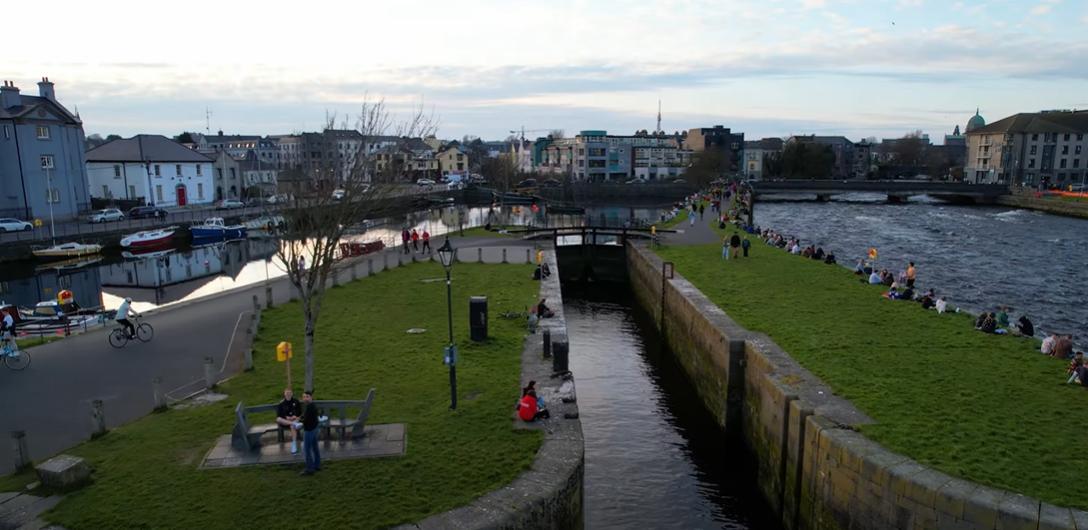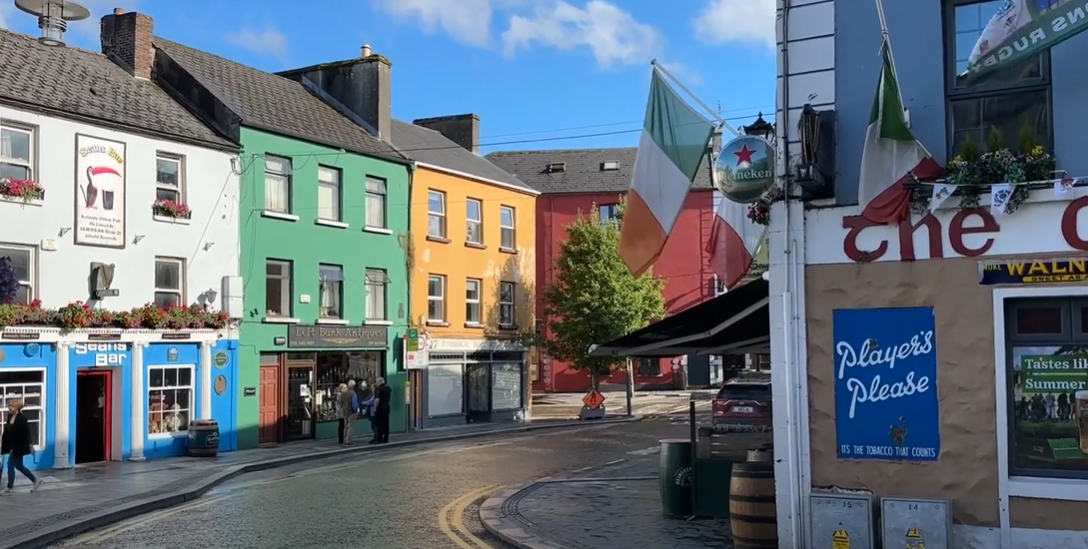
The cheapest places to live in Ireland are often found in smaller towns and rural areas, where housing costs, daily expenses, and the general cost of living are lower than in major cities like Dublin, Cork, and Galway. Towns in counties such as Leitrim, Roscommon, and Donegal frequently rank as some of the most affordable, offering lower rent, utility costs, and grocery prices. These areas provide a more budget-friendly lifestyle, attracting people looking to enjoy Ireland’s natural beauty and community-focused living while keeping expenses manageable.
When I moved to a small town in Roscommon, I was pleasantly surprised by how much further my budget stretched compared to when I lived in Dublin. Not only were rent and groceries more affordable, but the slower pace and tight-knit community made it feel like I was getting much more for my money. Living here has allowed me to save more and enjoy the simple pleasures of Irish countryside life without the financial pressure of city living.
Top 5 Cheapest Places to Live in Ireland
The top 5 cheapest places to live in Ireland are Waterford, Limerick, Galway, Dundalk, and Athlone. These towns and cities offer a range of affordable living options, each with its unique appeal. From the coastal charm of Waterford to the cultural allure of Limerick, there is a locale to suit various preferences and budgets. Galway blends a reasonable cost of living with a vibrant lifestyle, while Dundalk and Athlone are praised for their low-cost housing and central locations. These destinations provide economical alternatives for residents seeking a lower cost of living without compromising on the quality of life.
Waterford – Affordable City Living with Coastal Charm

Among the top five cheapest places to live in Ireland, Waterford distinguishes itself through its affordability paired with coastal allure. Irish cities prove that there are still options for budget-conscious residents, with Waterford ranking as one of the most affordable cities. The average house price here is lower than in many other urban areas, making it an attractive option for those who wish to enjoy the benefits of urban living without incurring the substantial expenses often associated with larger cities. Waterford's manageable scale and the advantages of the Irish education system contribute to its charm and ease of living, making it particularly appealing for residents who still seek a vibrant community atmosphere.
-
Cost of Living: In comparison to other Irish cities, Waterford has a notably lower cost of living, making it a popular choice for individuals, families, and retirees aiming to maximize their financial resources.
-
Housing: The local real estate market is diverse, featuring a range of affordable housing options including stylish urban apartments, quaint townhouses, and larger family homes with gardens, all at prices well below those in cities like Dublin or Cork.
-
Amenities: Residents have access to a variety of amenities, including shopping centers, restaurants, pubs, and cafes that offer both local and international cuisine.
-
Outdoor Activities: The surrounding countryside and coastal areas provide plentiful outdoor activities, from hiking and cycling on the Waterford Greenway to sailing and fishing in the Irish Sea.
-
Education: Waterford is also noted for its educational facilities, with several well-regarded schools and a major third-level institution, the Waterford Institute of Technology, which draws students from across Ireland and abroad.
Beyond its urban center, Waterford offers abundant amenities and recreational opportunities that enhance its residents' quality of life. For outdoor enthusiasts, the nearby Waterford Greenway provides miles of trails for biking and walking, and the city's coastal location means things to do in Waterford like water sports and beach activities are readily available during the warmer months.
Limerick – Budget-Friendly Living with Cultural Appeal

Limerick ranks among the top five most affordable places to live in Ireland, offering a mix of budget-friendly housing options and a lively cultural atmosphere. With a cost of living considerably lower than Dublin's, residents can enjoy a comfortable lifestyle without the high expenses typically found in larger urban areas. The city provides a range of affordable housing choices, making it an appealing destination for individuals and families aiming to enjoy the best things to do in Limerick maximizing both their experiences and their budget.
-
Housing: The real estate market in Limerick includes a variety of homes affordable for singles and families, with prices well below those in Ireland’s major urban centers.
-
Living Expenses: Everyday costs such as groceries and utilities are reasonable, and public transport services are both affordable and reliable, further reducing the cost of living.
-
Employment Opportunities: The city's growing economy presents numerous job opportunities, particularly in technology and education sectors, attracting professionals looking for a balanced work-life environment.
-
Educational Institutions: Limerick is home to respected educational institutions, including the University of Limerick and Limerick Institute of Technology, which draw students and academic professionals alike.
In addition to its economic advantages, Limerick’s rich cultural tapestry adds to its appeal. The city is not only affordable but also offers a robust cultural life with its numerous festivals, historical sites, and museums that engage both locals and tourists. These attractions, coupled with the friendly community and scenic beauty of the region, ensure that life in Limerick is as enriching as it is economical. This blend of affordability and culture makes Limerick a compelling choice for those seeking a cost-effective yet fulfilling place to live.
Galway – Balancing Cost with Quality Lifestyle

Galway stands out as one of the more affordable places to live in Ireland, offering an impressive balance between cost-effectiveness and quality of life. Compared to pricier cities like Dublin and Cork, accommodation options in Galway provide a vibrant cultural scene and a lively atmosphere, boosted by the presence of a large student community attending its well-regarded universities. The cost of housing in Galway is generally lower than in other major urban centers, making it an appealing option for families, young professionals, and students alike who are looking for a budget-friendly lifestyle without sacrificing urban amenities.
-
Rental Prices: Median rental prices in Galway are significantly lower than in Dublin. A one-bedroom apartment in the city center is about 30% cheaper.
-
Living Expenses: Daily expenses, including groceries and transportation, are also more affordable here.
-
Employment Opportunities: The city has a growing job market, especially in the tech and tourism sectors, which offers competitive salaries without the high cost of living found in larger cities.
-
Community and Safety: Galway is known for its tight-knit community and low crime rates, appealing to those looking for a secure environment.
These factors make Galway an excellent choice for those seeking a locale that offers both a lower cost of living and a quality lifestyle. Its coastal location adds to the appeal, with easy access to beautiful beaches and outdoor activities. Galway’s community spirit is supported by numerous festivals and events, ensuring that while you may pay less for everyday needs, your cultural calendar remains full. This balance makes Galway not only an affordable place to live but also a vibrant and fulfilling one.
Dundalk – A Hidden Gem for Low-Cost Living

Dundalk stands out as one of Ireland’s most budget-friendly towns, offering a unique combination of affordability and accessibility. Nestled near the Northern Ireland border, Dundalk provides an appealing lifestyle with a rich cultural backdrop, modern amenities, and a lower cost of living than major Irish cities. Residents benefit from an array of local facilities, including shopping centers, recreational parks, and quality schools, all at a fraction of the cost found in larger urban areas. This mix of charm and value makes Dundalk an ideal choice for those seeking affordable living without sacrificing convenience.
-
Housing Affordability: Dundalk features a range of affordable housing options. From modern apartments to traditional homes, the property prices here are substantially lower than in Dublin.
-
Cost of Living: Daily expenses, such as groceries and transportation, are relatively low, allowing residents to maintain a comfortable lifestyle without the financial strain often found in larger cities.
-
Employment Opportunities: The town hosts several multinational corporations, providing ample job opportunities that do not require a commute to bigger cities.
-
Community and Safety: Dundalk is known for its tight-knit community and lower crime rates compared to urban centers, making it ideal for families and retirees alike.
Living in Dundalk not only means spending less but also enjoying a quality of life comparable to more expensive areas. The town's strategic location allows for easy access to both Dublin and Belfast, broadening the employment and leisure options available to its residents. Community events, along with local clubs and societies, ensure that there is always something to do, fostering a strong sense of community. As such, Dundalk continues to attract those seeking a quieter, more affordable lifestyle without sacrificing the conveniences of city living.
Athlone – Central Location with Cheap Housing Options

Athlone also stands out as one of the most affordable places to live in Ireland. Located centrally along the River Shannon, this town offers a strategic advantage for both living and commuting. Its robust local economy and lower cost of living attract those seeking affordability without sacrificing the conveniences of urban life. The town's housing market is particularly appealing, with a range of inexpensive options compared to larger Irish cities.
-
Housing Affordability: Athlone boasts a variety of housing styles at prices that are significantly lower than the national average.
-
Cost of Living: Daily expenses, such as groceries and utilities, are reasonably priced, making Athlone a cost-effective choice for residents.
-
Transport Links: Efficient public transport and major road networks connect Athlone conveniently with Dublin and Galway.
-
Educational Facilities: Athlone is home to several high-performing schools and a third-level institution, offering good educational opportunities without the need to travel far.
-
Community and Culture: The town hosts numerous festivals and events, fostering a strong sense of community and providing rich cultural experiences.
Living in Athlone not only means enjoying lower expenses but also experiencing a high quality of life. The community is vibrant and welcoming, with plenty of cultural, educational, and recreational activities suited for all ages. The town’s commitment to development is evident in its well-maintained infrastructure and the continuous improvements in public services and amenities. For those looking for a budget-friendly locale without compromising on lifestyle, Athlone is a prime choice.
Factors Affecting the Cost of Living in the Low Cost Irish Cities
Factors affecting the cost of living in low-cost Irish cities include housing availability, local wages, infrastructure, and access to amenities. Housing costs are often the biggest factor; in smaller towns and rural areas, property prices and rent are generally more affordable compared to larger cities like Dublin or Cork. Additionally, local wages play a role, as lower average incomes in these areas can contribute to lower prices for goods and services to match the community’s spending capacity.
Infrastructure also affects costs, with cities that have efficient public transport, healthcare, and educational facilities generally providing a lower cost of living due to reduced need for private spending on these services. Finally, access to amenities like shopping centers, recreational facilities, and dining options influences expenses, as cities with more local resources often have lower prices due to reduced travel costs and competition among businesses.
Housing and Rent Prices
Factors affecting the cost of living in the least expensive Irish cities, rooted in traditional Irish culture, prominently include housing and rent prices. In any given Irish city, these costs can significantly influence whether it is affordable for residents. On the west coast of the Emerald Isle, areas like County Leitrim, known for their rich Irish history and lower housing demand, typically feature cheaper living costs. According to the Central Statistics Office, this affordability attracts individuals and families looking for cost-effective living without compromising on quality of life. Economically, these cities benefit from an increased population base, boosting local businesses and services.
-
Rent prices in affordable Irish cities are often less than half of those found in Dublin, making them attractive to newcomers.
-
The availability of housing varies, with smaller cities offering substantial properties at lower prices compared to urban centers.
-
Government incentives for rural living can further reduce expenses, promoting smaller cities as viable options for budget-conscious renters and buyers.
Moreover, the general cost of living, including utilities and groceries, usually correlates with housing affordability. Cities like Sligo and Waterford exemplify this trend, with lower rent prices contributing to overall lower living expenses. These factors make such cities ideal for retirees, young professionals, and families seeking a balanced lifestyle. Thus, examining rent and housing trends provides clear insights into why certain Irish cities are more budget-friendly.
Food and Grocery Costs
Factors affecting the cost of living in the low-cost Irish cities prominently include food and grocery costs. Inexpensive cities in Ireland often benefit from local agricultural production, which can significantly reduce grocery prices. Additionally, the presence of discount supermarkets and local markets in these areas helps keep food expenses manageable. These cities avoid the premium pricing often found in more urbanized areas, making day-to-day living more affordable for residents.
-
Staple foods such as potatoes, dairy products, and bread are typically cheaper due to proximity to local sources.
-
Seasonal vegetables and fruits purchased from local farmers' markets can be significantly less expensive than those bought in chain stores.
-
Bulk purchasing and discount stores in these areas frequently offer lower prices, further helping to minimize grocery bills.
The affordability of food and groceries in Ireland's less expensive cities directly influences overall living costs, making them attractive to both locals and expatriates. Effective transportation links to larger markets also play a role, allowing for regular, cost-effective supply chains that benefit consumers. Thus, residents of these cities can enjoy a lower cost of living, which is a significant draw when combined with Ireland’s scenic landscapes and community-oriented lifestyle.
Transportation and Commuting Costs
Transportation and commuting costs significantly influence the cost of living in Ireland's more affordable cities. Efficient public transport systems in these areas allow residents to avoid the high expenses associated with car ownership. Services like buses and trains not only reduce daily travel costs but also minimize the need for parking spaces, which can be costly in urban centers. In cities such as Galway and Cork, the integration of cycling routes also supports a more economical lifestyle.
-
Public Transport Fees: Lower costs for public transportation, including buses and trains, help keep daily expenses manageable for residents.
-
Proximity to Workplaces: Living close to employment areas minimizes travel distances and time, cutting down on both fuel and transit costs.
-
Fuel Costs: Smaller cities often experience less traffic, leading to reduced fuel usage for car owners, thereby saving money.
Cities that facilitate easy access to efficient public transport and local amenities tend to have lower commuting costs, enhancing their affordability. The strategic location of residential areas within walking or cycling distance to workplaces and essential services further alleviates the financial burden on inhabitants. These factors collectively contribute to making certain Irish cities the cheapest places to live.
Utility Bills and Monthly Expenses
In identifying the cheapest places to live in Ireland, utility bills and monthly expenses play a significant role. The overall affordability of a city can be largely determined by the cost of basic utilities such as water, electricity, and gas, which are essential for daily living. Additionally, the expense related to internet and mobile services can vary significantly between regions, affecting the cost of living. Cities with lower utility costs naturally attract residents seeking financial ease.
-
Electricity prices in more affordable Irish cities often benefit from competitive rates and community energy projects, leading to lower monthly bills.
-
Water and sewage services, typically managed by local councils, can vary in cost based on the city’s infrastructure and efficiency.
-
Heating expenses are crucial, especially in areas farther from the coast where temperatures can be lower, impacting the overall monthly outlay for residents.
Moreover, other monthly expenses such as public transportation, grocery bills, and local taxes must be considered when calculating living costs. Affordable cities often have efficient public services and community programs that can help mitigate these expenses. Thus, the combination of lower utility bills and manageable monthly expenses contributes significantly to the appeal of Ireland’s more cost-effective cities as desirable places to live. This economic advantage attracts a diverse population, driving demand for housing yet still maintaining lower living costs compared to larger urban centers.
Pros and Cons of Living in Ireland’s Budget-friendly Cities
Living in Ireland's budget-friendly cities offers a mix of affordability and charm, with a slower pace, close-knit communities, and access to the scenic countryside. While these areas provide a lower-cost lifestyle, they come with both benefits and challenges. Understanding the pros and cons can help decide if life in one of Ireland’s affordable cities suits your needs.
Pro: Affordability
One of the top advantages of living in Ireland’s budget-friendly cities is the considerable reduction in living costs. Residents benefit from lower housing prices, which leaves more disposable income for other expenditures. This affordability extends beyond just rent to include cheaper groceries, services, and lower utility bills. For those looking to stretch their budgets, these cities offer a practical choice without sacrificing the essentials.
Pro: Community Feel
Smaller, more affordable cities in Ireland often boast a tight-knit community atmosphere. This can be especially appealing for newcomers seeking to establish roots in a supportive environment. The community-oriented lifestyle facilitates stronger connections and a more engaged social life, which can enhance personal well-being and provide a network of support that might be harder to find in larger, more impersonal cities.
Pro: Access to Nature
The geographical setting of many of Ireland's cost-effective cities often means that nature and outdoor activities are just a short distance away. Residents can enjoy easy access to the countryside, beaches, and parks, which are ideal for families, outdoor enthusiasts, or anyone looking to escape the hustle and bustle of urban life. This proximity to nature not only promotes a healthier lifestyle but also enriches residents' leisure time.
Con: Limited Job Opportunities
A significant downside to living in less expensive areas is the potential scarcity of employment opportunities. These cities might not host as many businesses, particularly in specialized or high-paying sectors, which can limit career growth and economic development. Residents might find themselves needing to commute longer distances or even relocate for better job prospects, which can diminish some of the cost-saving benefits of living in a budget-friendly city.
Con: Underdeveloped Infrastructure
Budget-friendly cities might struggle with underdeveloped infrastructure, which can impact house prices. This can manifest in fewer healthcare facilities, less investment in public schools, and inadequate public transportation systems. Such deficits can lead to challenges in accessing quality education and healthcare, and may complicate daily commutes, affecting residents' overall satisfaction and quality of life.
Con: Transportation Challenges
In many of Ireland’s more affordable areas, public transportation may not be as developed or extensive as in larger cities. This can pose a challenge for those who rely on public transit for commuting or do not own a personal vehicle. Limited transportation options can restrict how residents travel, potentially affecting their ability to access employment opportunities, social activities, and even basic services.
FAQs On Cheapest Place To Live in Ireland
1. What is the cheapest place to live in Ireland in 2025?
The cheapest place to live in Ireland in 2025 is Limerick. It offers affordable housing options and a lower cost of living compared to other Irish cities.
2. Why is Limerick the most budget-friendly city in Ireland?
Limerick's housing market is less competitive, which keeps rental and purchasing prices low. Additionally, everyday expenses such as groceries and transportation are more economical here.
3. How does the cost of living in Limerick compare to Dublin?
Limerick's cost of living is significantly lower than Dublin’s. While Dublin is known for its high rental prices, Limerick provides more budget-friendly living options, making it attractive for those seeking affordability.
4. What are other affordable places to live in Ireland?
Other affordable places include Waterford and Sligo. Both cities offer reasonable living costs, cheaper accommodation, and a good quality of life.
5. Are there any hidden costs associated with living in cheaper areas of Ireland?
Living in cheaper areas might involve higher transportation costs if you work in a different city. However, the overall savings on housing and living expenses generally outweigh these additional costs.
